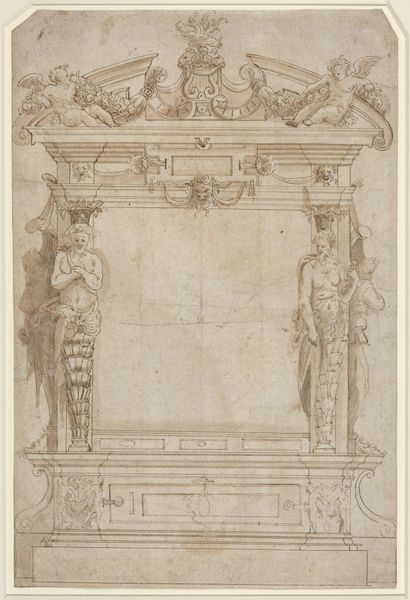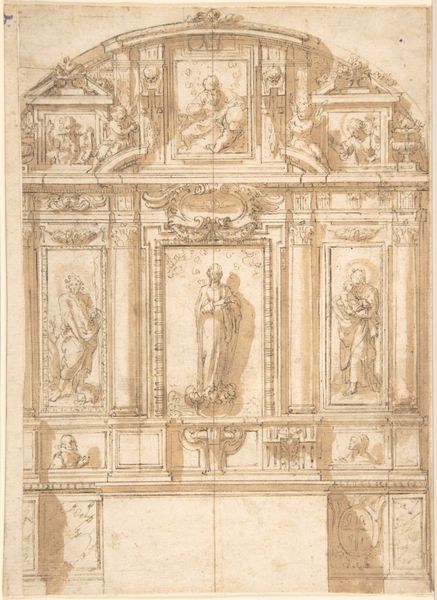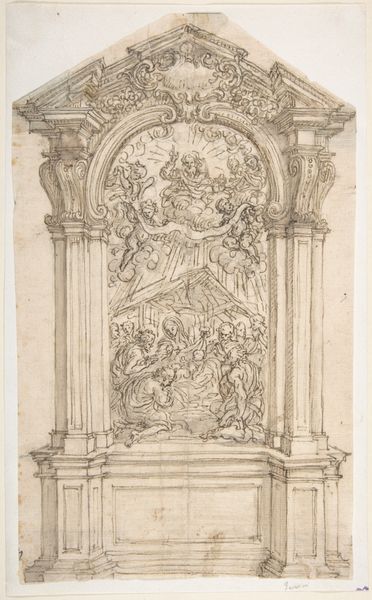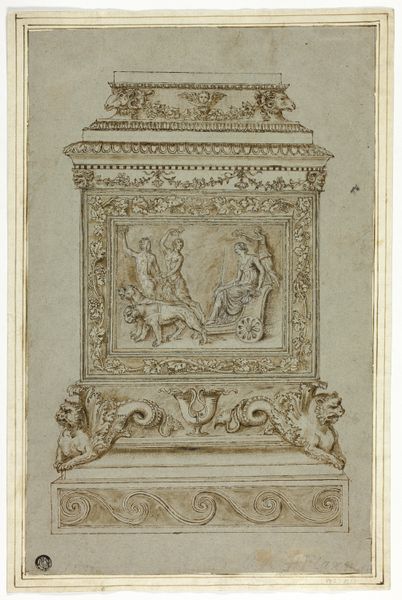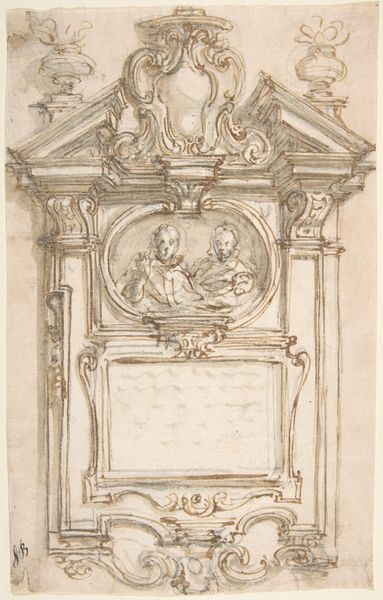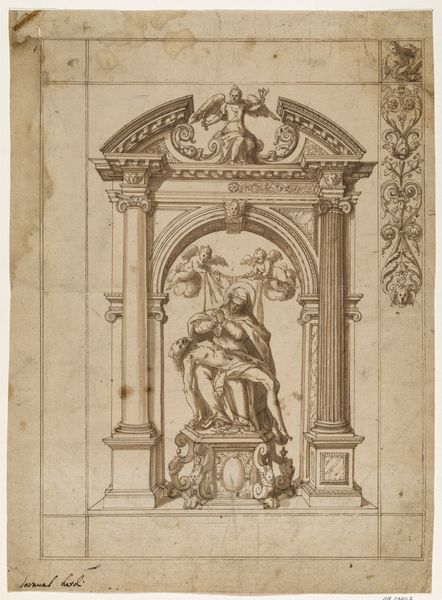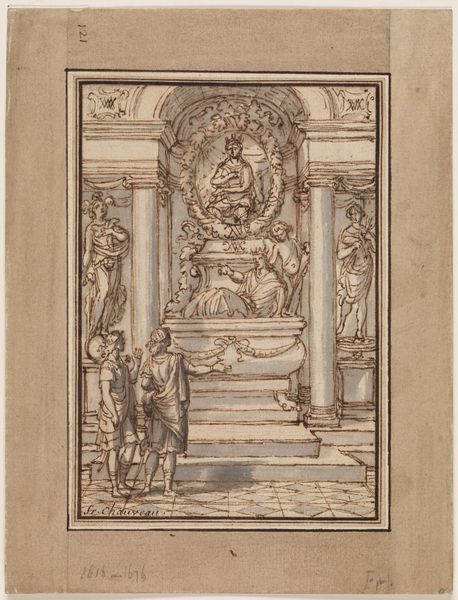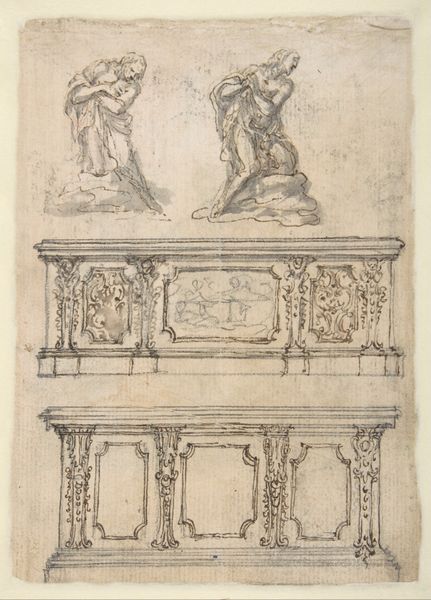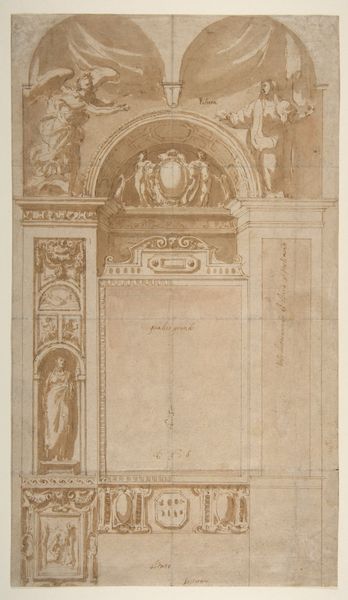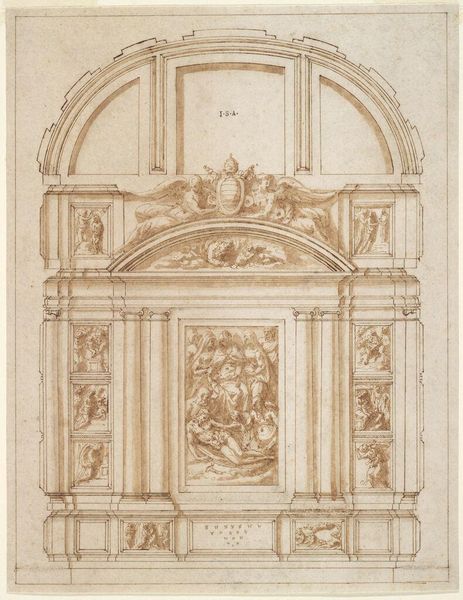
drawing, paper, ink, pencil, architecture
#
portrait
#
drawing
#
figuration
#
paper
#
form
#
ink
#
coloured pencil
#
pencil
#
line
#
history-painting
#
italian-renaissance
#
architecture
Dimensions: 8 1/2 x 5 3/4 in. (21.6 x 14.6 cm) - top cut to arch shape in middle.
Copyright: Public Domain
Curator: Editor: This is a fascinating preparatory drawing, "Project for a Tomb," created between 1585 and 1605 by an anonymous artist. It is made with pen and ink, pencil, and coloured pencil on paper, and currently held at The Met. I’m immediately drawn to the precision of the architectural details combined with the soft rendering of the figures. What catches your eye? Curator: What interests me here are the processes and materials embedded within the image itself. Note the architectural rendering, contrasted against the draped figures. How do you think the means of production informs our understanding of Renaissance ideas about death and commemoration? Editor: That's a great question! The precise rendering suggests a focus on permanence and grandeur, reflecting the patron's wealth and power, which were of interest at the time. Curator: Exactly. The drawing medium itself – the ink, the paper, the careful hatching – these speak to a system of workshop production and a material culture steeped in both tradition and nascent capitalism. Do you see the implications in the social context from its creation and the way this impacted the art piece? Editor: So, the materiality points not just to aesthetics, but also to the social structure and economics that made the creation possible? It’s amazing how those layers intersect. The medium is really the message here, perhaps even more than the figures themselves. Curator: Precisely. And thinking about the labour involved – the time, the skill – we can start to unpack the power dynamics inherent in this commission. It wasn’t just about remembering someone, but about cementing a certain kind of status. Editor: That gives me a totally new perspective on the image and this piece, because when looking at it as a drawing and considering materials and time and labor that goes into production... it just elevates it beyond an architectural drawing. Curator: And helps us appreciate it not just as a beautiful image, but as a complex document of its time.
Comments
No comments
Be the first to comment and join the conversation on the ultimate creative platform.
